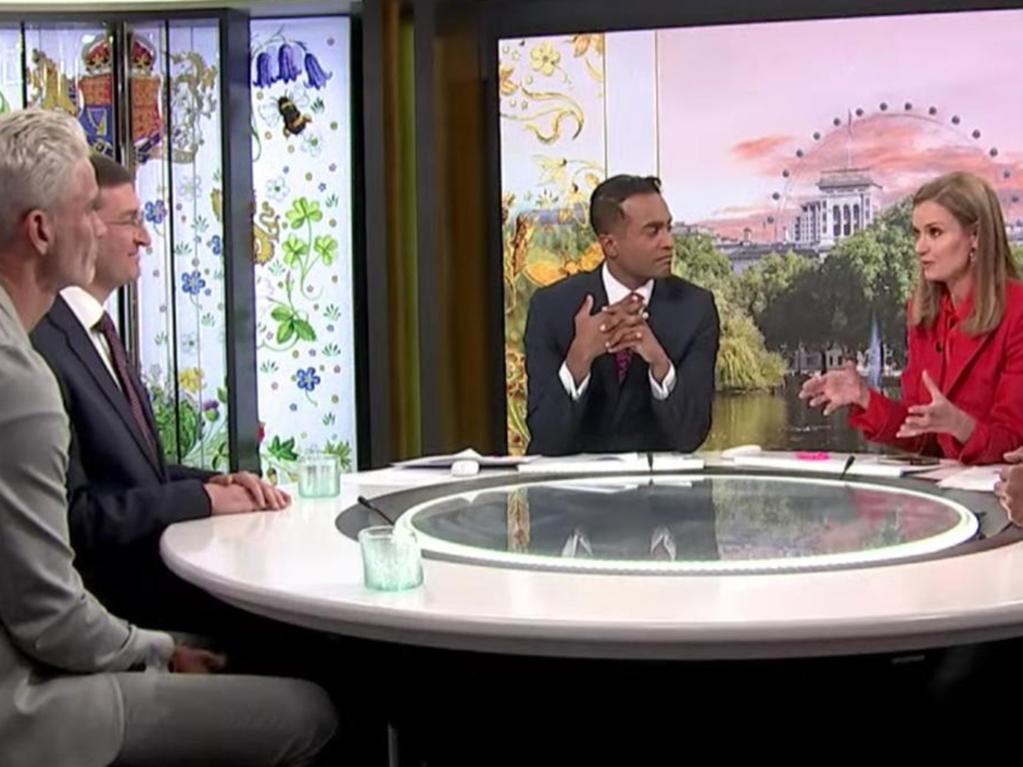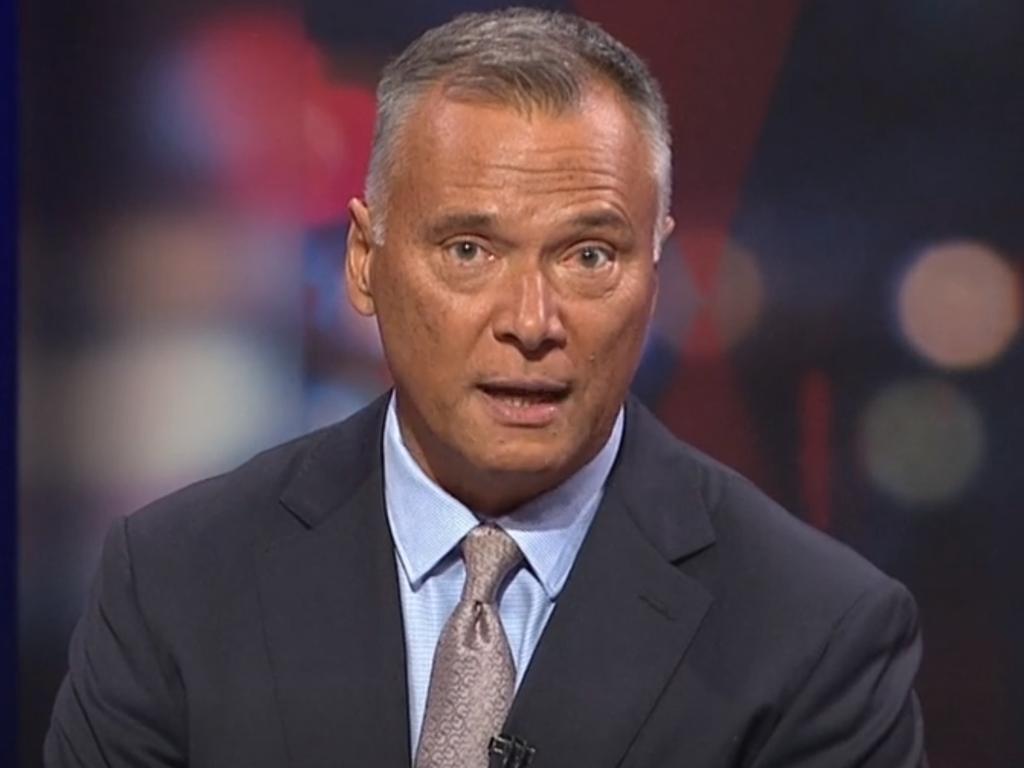
Contrary to popular belief, the “black armband” Blainey referred to was not that worn by Aboriginal protesters; rather, Blainey was invoking the longstanding custom in Australian Rules football of wearing a black armband to honour an old player or official who had passed away in the previous week.
Nor did Blainey use the term to minimise the harm European settlement inflicted on Indigenous Australians. On the contrary, he noted “it may be that as many as 20,000 Aborigines were killed, predominantly by Europeans but sometimes by Aborigines enrolled as troopers”. And he stressed, as undeniable facts of our history, “the frequent contempt for (Aborigines’) culture, sometimes the contempt for the colour of their skin, the removal of their freedoms and the breaking of their precious link with their tribal homelands”.

But what Blainey did do was to set those injustices against the backdrop of the broader historical process, in which our English inheritance played a key role, that gave this country the security, prosperity and liberty needed to build a better future – one all Australians could share.
Blainey’s point was that our past, like that of all nations, needed to be assessed accurately and in the round; but as self-confidence gave way to self-loathing, a “black armband” view of Australia’s past was gaining ground, which bore little relation to historical reality.
When Blainey expressed those concerns, the trend was incipient. Now, its effects are pervasive. And rarely have they been more starkly on display than in the ABC’s coverage of the coronation.
At the heart of that coverage were Stan Grant’s successive tirades, echoed by Craig Foster, co-chair of the Australian Republican Movement, and Indigenous lawyer Teela Reid, with presenter Julia Baird, who should have been moderating the polemics, stoking their flames.

The Stan Grant on display was not the one who celebrated a “story of success” in The Australian Dream: a success thanks to which “65 per cent of Indigenous people in Australia are employed and living lives, materially and socio-economically, like those of other Australians”.
Rather, this was a Grant for whom European settlement had brought only death, dispossession and destruction, framed by attempts at extinction and extermination.
And the culprit, in Grant’s steam-bath of emotion, was the Crown. But that account has an obvious problem: it is not true. Eliding all of history’s complexities, the picture it paints of the past is not a portrait but a grotesque caricature.
To take but one example, it was not merely the Crown’s policy, forcefully communicated to successive governors, that Aborigines were entitled to the full protection of the laws; it was also that governors had to ensure the colonies’ “Aboriginal inhabitants have an absolute right of selection, prior to all Europeans, of reasonable portions of the choicest land, for their especial use and benefit, out of the very extensive districts over which, from time immemorial, (they) have exercised distinct, defined and absolute rights of proprietary and hereditary possession”.

It was that duty which, following The Sale of Waste Lands Act 1842 (Imp), led colonial governments to consistently include clauses in pastoral leases guaranteeing the right of “Aboriginal inhabitants and their descendants” to “occupy, dwell on and obtain food and water, make such dwellings, and take for food birds and animals, as they would have been entitled to if this (lease) had not been made”.
That those entitlements were infringed, as were rights to the full protection of the laws, is beyond doubt. It is, however, also beyond doubt that the colonial frontier was a vast, poorly policed area in which violence was endemic and the laws were flouted, misinterpreted or abused – not solely at Indigenous Australians’ expense. And seen in that context, the Crown’s commitments, no matter how poor their implementation, gave future generations of Indigenous Australians a promissory note whose fulfilment they could demand and secure.
But Grant’s tirades did not simply ignore those facts; they also implied that the injustices reflected a policy of elimination or extermination.
That contention can only be described as absurd.

Thus, in incoherently trying to advance it, Grant entirely misrepresented the “dying race” trope that held out the prospect of Aborigines vanishing from the face of the Earth. Far from serving to legitimate massacres of Indigenous Australians, that trope was powerfully deployed by influential humanitarians to secure measures of “protection” – reserves, missions, government settlements – that would avert what was believed to have happened in Tasmania.
Those measures were certainly not ideal but they achieved their objective: the Aboriginal population, which collapsed in the first half of the 19th century, stabilised and then entered into a prolonged period of rapid expansion.
And “protection” did not just protect; it also set the ground for the integration policies that, in the aftermath of World War II, secured genuine if fragile gains that could and should have been built on, rather than dissipated.
All that was done by many hands: often at cross purposes, always imperfectly. Yet any fair assessment would have recognised that the Crown’s role was invariably well-intentioned, if at times ineffective.
One might have expected Julia Baird to inject that perspective; after all, she authored a biography of Queen Victoria that rightly says Victoria “was kind and truthful, had a keen sense of justice” and – in an age when racism was everywhere on the rise – “despised racial prejudice”.
And Baird would know that as late as 1978, CD Rowley, responsible for one of the first historically informed studies of Australian race relations, found a widespread reverence for Victoria among “the old folk”, with that reverence for the Crown continuing to resonate in Aboriginal oral histories collected two decades later.
But just as Grant had shed his previous skin, so had Baird. Instead of highlighting Indigenous respect for the Crown, she claimed her experience showed that the royal archives were actively trying to suppress the monarchy’s historical record.
The inference viewers were plainly being invited to draw was that the attempted suppression related to the injustices for which the Crown was being loudly blamed.
In reality, the royal archives’ concerns related solely to Baird’s speculations (which the Times Literary Supplement dismissed as “proving nothing” beyond what others “have been arguing for decades”) about Victoria’s sex life – an issue entirely irrelevant to the crown’s historic responsibility.
Baird was therefore misleading viewers, intentionally or otherwise, in a program for whose veracity she was responsible – a program in which she not merely tolerated but encouraged the accumulation of inaccuracies.
“An equal right of all to the truth,” said the great French liberal, Benjamin Constant, in contemplating the lessons of tyranny, “is the most fundamental of the rights of man”, because the truth is the earth between our feet, the only solid ground on which freedom can build.
By cavalierly shredding that right, the ABC has given renewed intensity to the warning Geoffrey Blainey issued all those years ago – and underscored the importance of protecting Australia’s past from the zealots who would, if they could, destroy its future.








Thirty years ago, in the John Latham Memorial Lecture he delivered in Sydney on April 28, 1993, Geoffrey Blainey introduced the “black armband” view of Australian history into the national discussion.